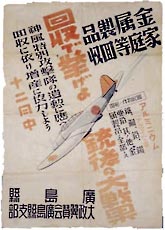
Metal collection posterAs metals essential to weapons manufacture grew scarce, a metal collection order was issued in 1941. Household metal goods, such as pots and pans, and even temple bells were confiscated. |
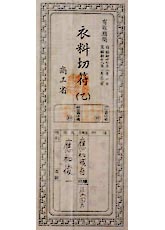
Clothing couponsIn February 1942, a coupon system for clothing was implemented in order to restrict the purchase of clothing. |
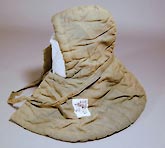
Air-raid hoodAir-raid hoods were worn during air raids in order to protect people from falling objects and sparks from fires. Children in those days walked to and from their school with their own air-raid hoods. |
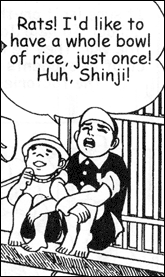 |

War through the Eyes of Children
With the Help of Barefoot Gen
Life during the War
After the Sino-Japanese War began in 1937, the Japanese government began promoting a “national spiritual mobilization movement” designed to encourage the Japanese people to support the war. Eventually, the government used neighborhood and block associations to create a system that extended its policies to every corner of the country.
Under this wartime regime, the people were forced into harsh sacrifices as most supplies and funds went to the military. Food and clothing were available only through coupon and ration systems managed by neighborhood associations. The government encouraged people to save money and purchase war bonds to cover enormous war expenditures. Later, pots, pans and other household metal were confiscated to make guns and bullets. Firefighting drills in preparation for air raids became mandatory and routine.
As the war dragged on, students in secondary schools (junior high schools, women’s high schools, and vocational schools) and even those attending colleges and universities were mobilized, becoming a vital part of the workforce in factories and other war-related facilities.
In 1945, as cities in Japan were leveled one after the next by U.S. air raids, the Japanese government prepared for the battle on the mainland.
What was life like for Gen and his family?
From Barefoot Gen-A Cartoon Story of Hiroshima, Last Gasp of San Francisco, 2004, translated by Project Gen
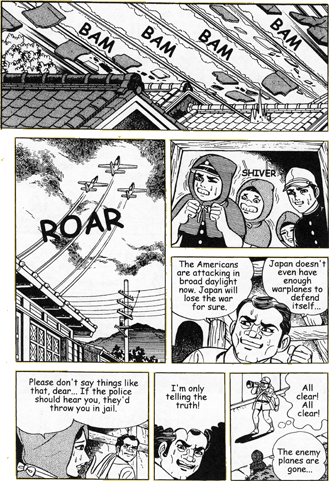
* Barefoot Gen includes some expressions now considered inappropriate. However, because rephrasing would affect the entire story, such expressions remain as they appeared in the original.